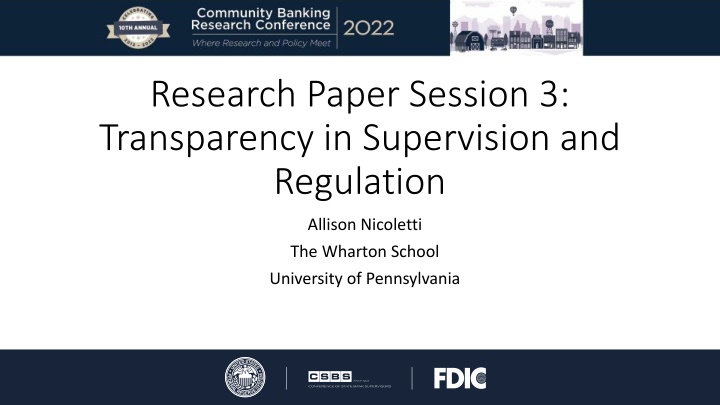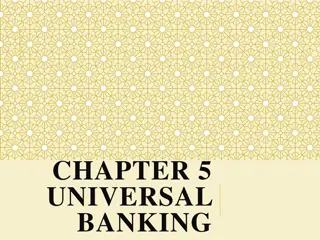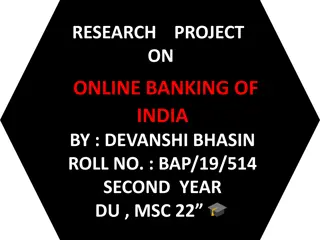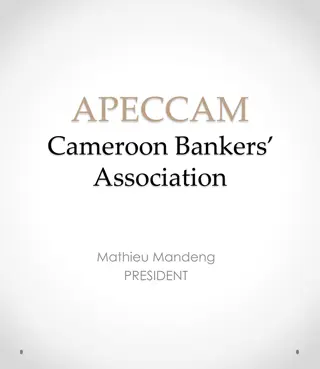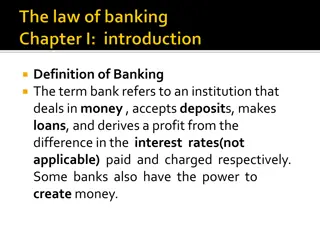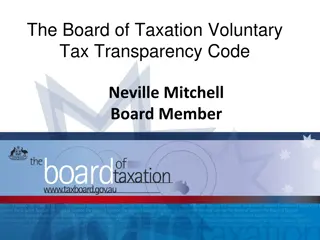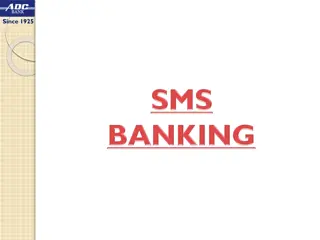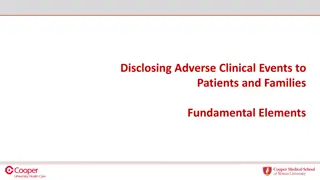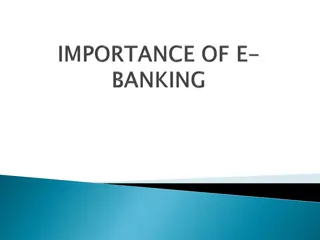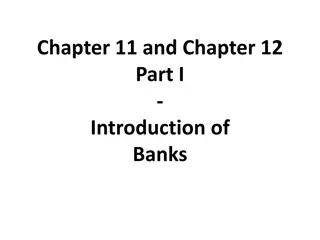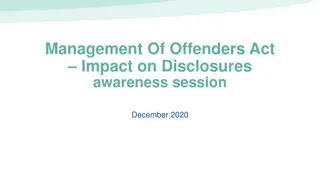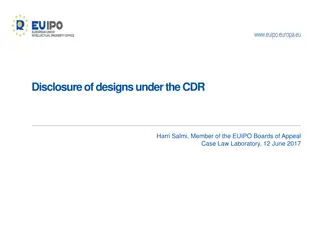Transparency in Banking: Examining Disclosure and Regulation
Discussion on the importance of transparency in the banking industry, focusing on the level of information disclosure by banks and its impact on market discipline, lending practices, and regulatory intervention. Papers explore different facets of transparency, including the disclosure audience, nature of information, and effects of regulatory transparency on bank performance.
Download Presentation

Please find below an Image/Link to download the presentation.
The content on the website is provided AS IS for your information and personal use only. It may not be sold, licensed, or shared on other websites without obtaining consent from the author.If you encounter any issues during the download, it is possible that the publisher has removed the file from their server.
You are allowed to download the files provided on this website for personal or commercial use, subject to the condition that they are used lawfully. All files are the property of their respective owners.
The content on the website is provided AS IS for your information and personal use only. It may not be sold, licensed, or shared on other websites without obtaining consent from the author.
E N D
Presentation Transcript
Research Paper Session 3: Transparency in Supervision and Regulation Allison Nicoletti The Wharton School University of Pennsylvania
Transparency in the Banking Industry Very important topic! Ongoing discussion about how much information banks should disclose. More disclosure allows for better market discipline over bank risk-taking: Push for disclosure of stress test results following financial crisis in 2007-2009. More disclosure may constrain lending: Congress and bank regulators relaxed disclosure of troubled debt restructurings (TDRs) at the start of the Covid pandemic. Interesting papers that each consider a different idea of transparency Key questions: What information is being disclosed (or not disclosed)? Who is the disclosure audience?
Disclosure audience: Examiners/ regulators Public equity market Consumers Depositors Paper 1 Paper 2 Paper 3 Private information Public information Sources: Examination report SEC filings (public banks) Call reports/ Y-9C reports SEC CL correspondence CRA (larger banks) Other: e.g., HMDA, SOD Nature of information: Small business lending locations Regulatory transparency Sentiment CAMELS ratings Bank performance and accounting quality
Paper 1 story Banks pre-emptively increase the timeliness of loan loss reporting Risk of deposit runs and regulatory intervention increases Threat of comment letter (CL) correspondence release Reduce lending growth, reduce loan portfolio risk; increase procyclical lending What information does the CL correspondence convey? Does this update outsiders expectations of (a) bank performance (i.e., ROA is 1% rather than 1.5%) or (b) the quality of the estimate of bank performance (i.e., larger confidence interval around 1.5%)? Bank run models focus on former, but CL correspondence may relate more to latter. Does regulatory transparency relate to the SEC or to bank regulators?
Paper 1 story Banks pre-emptively increase the timeliness of loan loss reporting Threat of comment letter (CL) correspondence release Risk of deposit runs increases Reduce lending growth, reduce loan portfolio risk; increase procyclical lending How do we separate the effects of CL release on the underlying fundamentals vs. the effects of CL release on accounting choices (i.e., loan loss provision timeliness, LLPT)? Would all banks change both lending and LLPT or can you make predictions about which actions certain banks would take (e.g., banks with greater expected SEC scrutiny or with peer banks that received CLs regarding specific issues)?
Paper 2 story Decrease in local business formation Some banks stop disclosing CRA information Banks reduce lending in CRA areas Public pressure to lend in certain areas decreases What prevents nondisclosure from being interpreted as the worst-case scenario (i.e., that the bank will stop lending in CRA areas)? Frictions that prevent all banks from disclosing: Proprietary costs (or disclosure costs in general) Uncertainty about whether manager has information Incorrect interpretation of nondisclosure by outsiders Banks are presumably still collecting and providing this information to examiners.
Paper 2 story Decrease in local business formation Some banks stop disclosing CRA information Banks reduce lending in CRA areas Public pressure to lend in certain areas decreases What is the role of examiners in this setting? Do you observe similar results for mortgage lending (loan type affected by CRA but for which information is still publicly-available via HMDA)?
Paper 3 story Future bank performance Bank examination Examination report sentiment Regulatory influence Bank actions What does examination report sentiment capture? Is report sentiment directly associated with future bank performance or is it a proxy for regulatory influence (which is a driver of future bank performance)? Can you partition on regulatory actions (i.e., informal actions that are not publicly-disclosed)?
Paper 3 story Future bank performance Examination report sentiment Bank examination Deposit and equity markets? What is ultimate takeaway? Who learns information during this process? Does the information leak to deposit and equity markets?
Thank you and best of luck with the papers!
